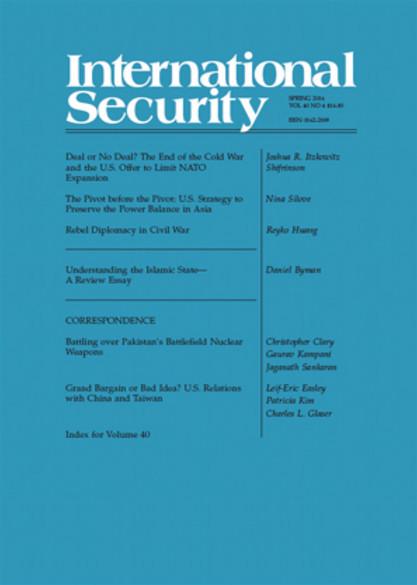意识形态敌人何时结盟?
IF 4.8
1区 社会学
Q1 INTERNATIONAL RELATIONS
引用次数: 4
摘要
为什么意识形态上的国际敌人——由在国内制度和价值观上存在深刻分歧的领导人统治的国家——有时能够克服意识形态上的分歧,结成同盟来应对共同的威胁,而有时却不能?面对共同敌人的意识形态敌人之间的联盟,不同于意识形态相似、面临类似威胁的国家之间的联盟。这些联盟的成员永远被两种强大的竞争力量所撕裂。共同的物质威胁促使这些国家走到一起,而意识形态差异的影响又将它们分开。要预测意识形态上的敌人在追求共同利益的过程中什么时候可能结盟,什么时候不可能结盟,就有必要知道这些相互竞争的力量中哪一方在特定的时间可能占据主导地位。意识形态敌意之外的两个意识形态变量的价值在决定结果方面起着关键作用:(1)国家对国内重大意识形态变化的敏感性;(2)国家间意识形态差异的性质。当这些附加的意识形态变量的价值发生变化时,相似程度的意识形态敌意和物质威胁将对领导人的联盟政策产生截然不同的影响。本文章由计算机程序翻译,如有差异,请以英文原文为准。
When Do Ideological Enemies Ally?
Abstract Why is it that international ideological enemies—states governed by leaders engaged in deep disputes about preferred domestic institutions and values—are sometimes able to overcome their ideological differences and ally to counter shared threats, and sometimes they are not? Alliances among ideological enemies confronting a common foe are unlike coalitions among ideologically similar states facing comparable threats. Members of these alliances are perpetually torn by two sets of powerful contending forces. Shared material threats push these states together, while the effects of ideological differences pull them apart. To predict when ideological enemies are and are not likely to ally in the pursuit of common interests, it is necessary to know which of these contending forces is likely to dominate at a particular time. The values of two ideological variables beyond that of ideological enmity play the key role in determining outcomes: (1) states’ susceptibility to major domestic ideological changes and (2) the nature of the ideological differences among countries. Similar levels of ideological enmity and material threats will have vastly different effects on leaders’ alliance policies as the values of these additional ideological variables alter.
求助全文
通过发布文献求助,成功后即可免费获取论文全文。
去求助
来源期刊

International Security
Social Sciences-Law
CiteScore
7.40
自引率
10.00%
发文量
13
期刊介绍:
International Security publishes lucid, well-documented essays on the full range of contemporary security issues. Its articles address traditional topics of war and peace, as well as more recent dimensions of security, including environmental, demographic, and humanitarian issues, transnational networks, and emerging technologies.
International Security has defined the debate on US national security policy and set the agenda for scholarship on international security affairs for more than forty years. The journal values scholarship that challenges the conventional wisdom, examines policy, engages theory, illuminates history, and discovers new trends.
Readers of IS discover new developments in:
The causes and prevention of war
U.S.-China relations
Great power politics
Ethnic conflict and intra-state war
Terrorism and insurgency
Regional security in Africa, Asia, Europe, and Latin America
U.S. foreign and defense policy
International relations theory
Diplomatic and military history
Cybersecurity and defense technology
Political economy, business, and security
Nuclear proliferation.
 求助内容:
求助内容: 应助结果提醒方式:
应助结果提醒方式:


